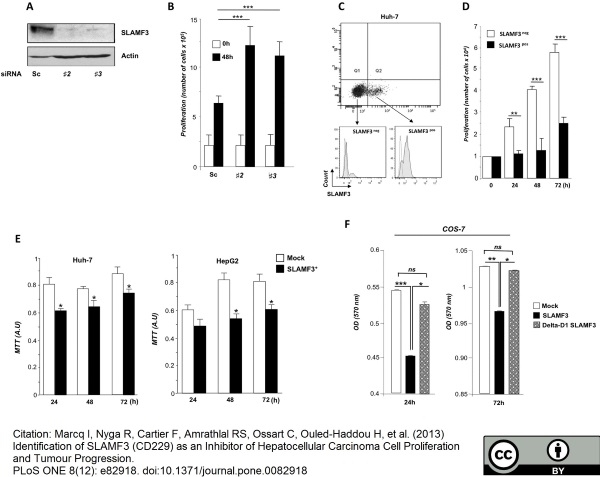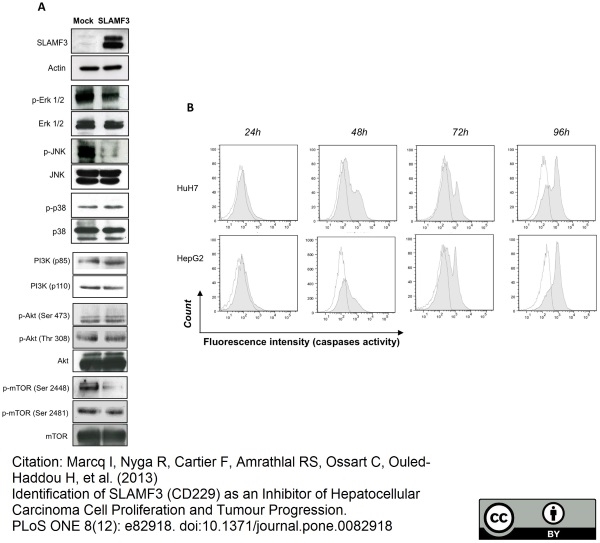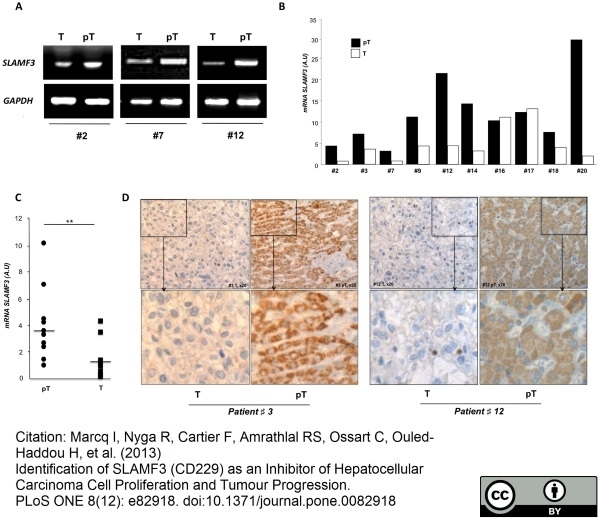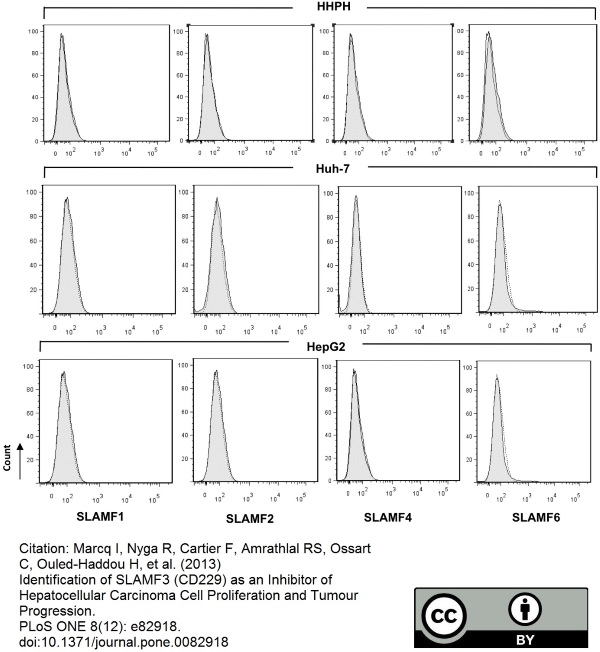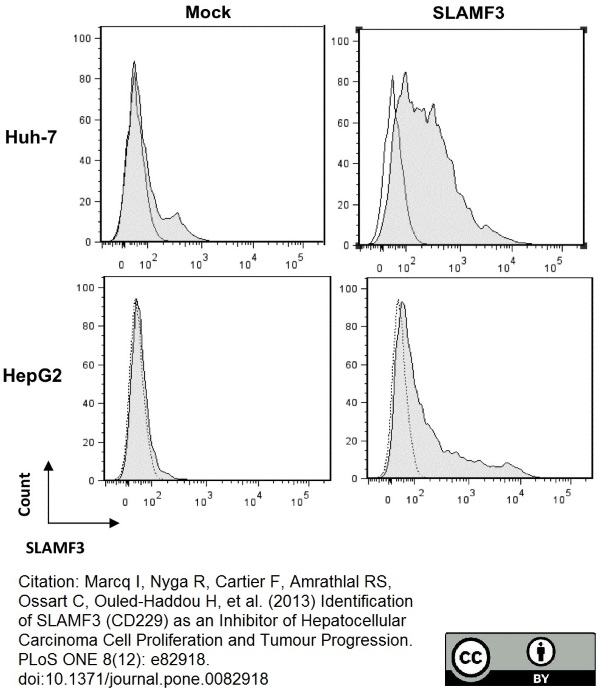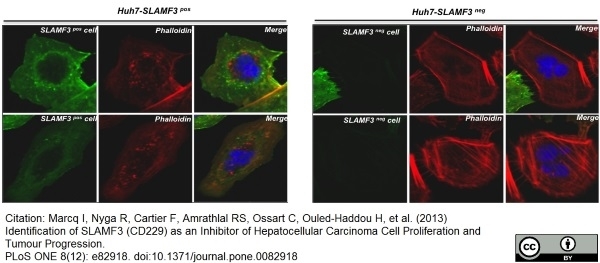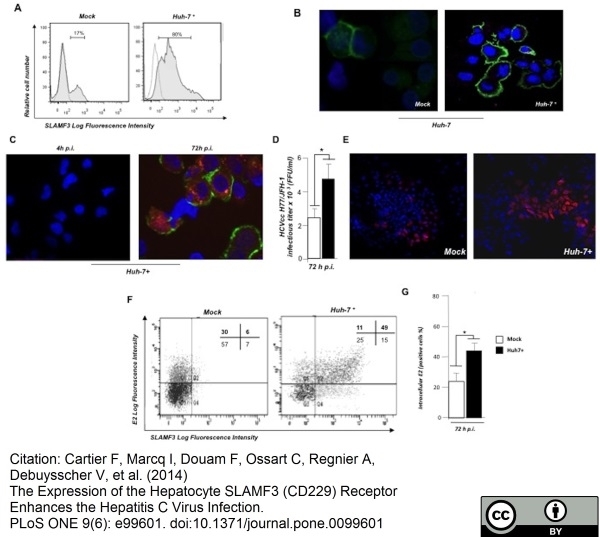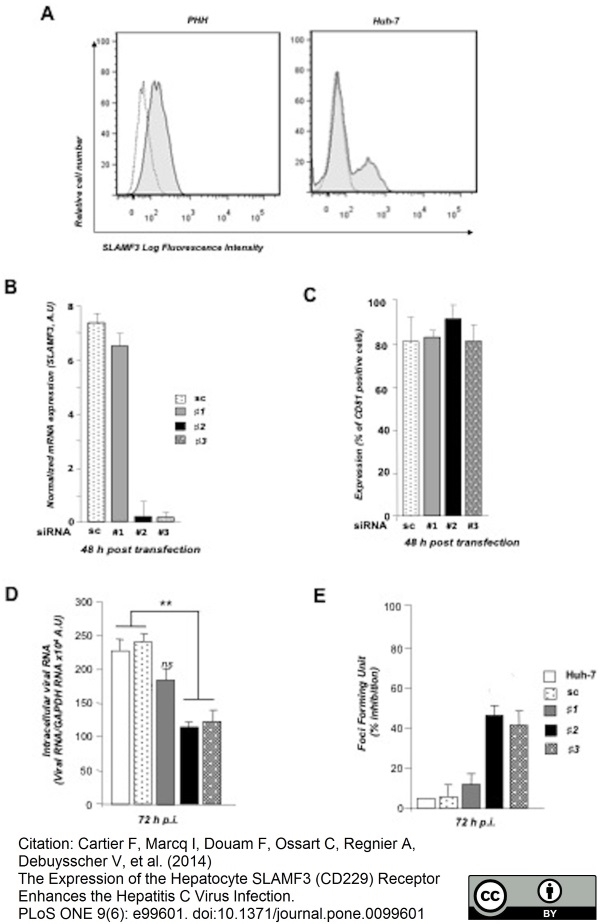CD229 antibody | HLy9.1.25









Mouse anti Human CD229
- Product Type
- Monoclonal Antibody
- Clone
- HLy9.1.25
- Isotype
- IgG1
- Specificity
- CD229
| Mouse anti Human CD229 antibody, clone HLy9.1.25 recognizes the human cell surface antigen CD229 also known as T-lymphocyte surface antigen Ly-9 or SLAM family member 3. CD229 is a 608 amino acid single pass type I transmembrane glycoprotein of ~120 kDa as evaluated by immunoprecipitation of cells transfected with the full length human CD229 cDNA. However immunoprecipitation of CD229 from Daudi cell lysates with dlone HLy9.1.25 yields bands of 120 kDa corresponding to the full length CD229 and a ~100 kDa band attributed to an alternatively spliced isoform lacking the fourth Ig-like domain (de la Fuente et al. 2001). Human CD299 is expressed on thymocytes, T-cells and B-cells (Del Valle et al. 2003). CD229 has also been described as a tumor associated antigen in chronic lymphocytic leukemia (Bund et al. 2006) and has been implicated in the development of spontaneous autoantibody production to nuclear antigens in mice and is potentially a target for the treatment of autoimmunity (de Salort et al. 2013). |
- Target Species
- Human
- Product Form
- Purified IgG - liquid
- Preparation
- Purified IgG prepared by affinity chromatography on Protein G from tissue culture supernatant
- Buffer Solution
- Phosphate buffered saline
- Preservative Stabilisers
- 0.09% sodium azide (NaN3)
- Carrier Free
- Yes
- Immunogen
- Mouse pre-B cell line 300.19 transfected with CD229 cDNA.
- Approx. Protein Concentrations
- IgG concentration 1.0 mg/ml
- Fusion Partners
- Spleen cells from immunized BALB/c mice were fused with cells of the mouse NS-1 myeloma cell line.
- Regulatory
- For research purposes only
- Guarantee
- 12 months from date of despatch
Avoid repeated freezing and thawing as this may denature the antibody. Storage in frost-free freezers is not recommended.
| Application Name | Verified | Min Dilution | Max Dilution |
|---|---|---|---|
| Flow Cytometry | 1/50 | 1/100 | |
| Immunoprecipitation |
- Flow Cytometry
- Use 10μl of the suggested working dilution to label 106 cells in 100μl or 100μl whole blood
| Description | Product Code | Applications | Pack Size | List Price | Your Price | Quantity | |
|---|---|---|---|---|---|---|---|
| Mouse IgG1 Negative Control | MCA928 | F | 100 Tests |
|
Log in | ||
| List Price | Your Price | ||||||
|
|
Log in | ||||||
| Description | Mouse IgG1 Negative Control | ||||||
Source Reference
-
de la Fuente, M.A. et al. (2001) Molecular characterization and expression of a novel human leukocyte cell-surface marker homologous to mouse Ly-9.
Blood. 97 (11): 3513-20. -
Cartier, F. et al. (2014) The expression of the hepatocyte SLAMF3 (CD229) receptor enhances the hepatitis C virus infection.
PLoS One. 9: e99601.
References for CD229 antibody
-
Marcq. I. et al. (2013) Identification of SLAMF3 (CD229) as an inhibitor of hepatocellular carcinoma cell proliferation and tumour progression.
PLoS One. 8 (12): e82918. -
Margraf, S. et al. (2015) A polymorphism in a phosphotyrosine signalling motif of CD229 (Ly9, SLAMF3) alters SH2 domain binding and T-cell activation.
Immunology. 146 (3): 392-400. -
Fouquet, G. et al. (2020) Mammary SLAMF3 Regulates Store-Operated Ca2+ Entry and Migration Through STIM1 in Breast Cancer Cells and Cell Lines
J Canc Sci Clin Therapeut 04 (04) [Epub ahead of print].
Further Reading
-
Sayós J et al. (2001) Cell surface receptors Ly-9 and CD84 recruit the X-linked lymphoproliferative disease gene product SAP.
Blood. 97 (12): 3867-74.
- Synonyms
- LY9
- SLAMF3
- RRID
- AB_324166
- UniProt
- Q9HBG7
- Entrez Gene
- LY9
- GO Terms
- GO:0007155 cell adhesion
- GO:0016021 integral to membrane
- GO:0016064 immunoglobulin mediated immune response
MCA2124
If you cannot find the batch/lot you are looking for please contact our technical support team for assistance.
Please Note: All Products are "FOR RESEARCH PURPOSES ONLY"
View all Anti-Human ProductsAlways be the first to know.
When we launch new products and resources to help you achieve more in the lab.
Yes, sign me up
